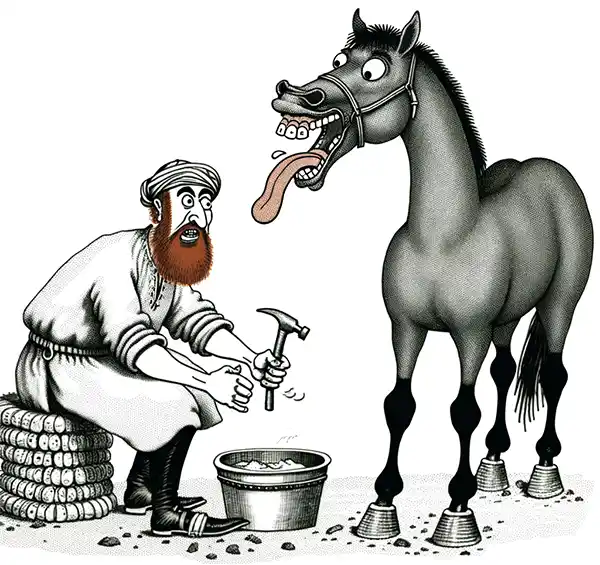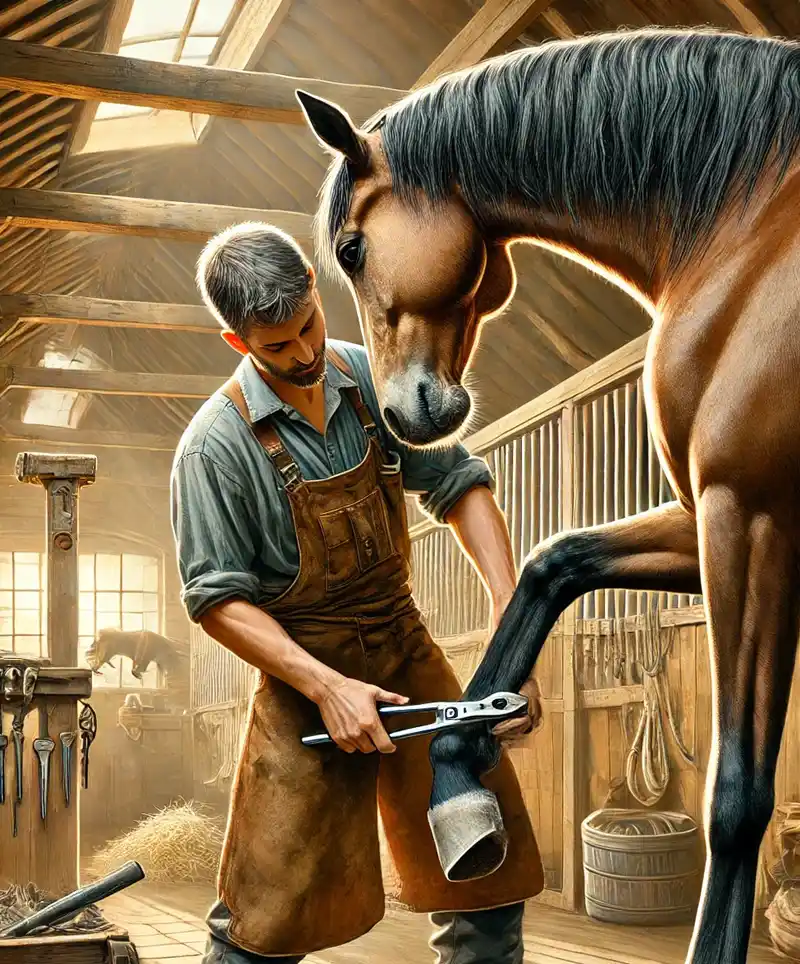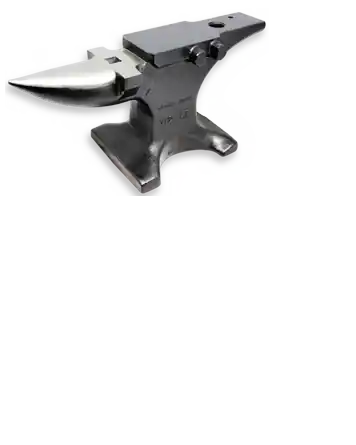Honoring the Hoof Heroes
Every July, we tip our hats and raise our hammers to celebrate National Farriers Week, a time dedicated to the skilled professionals who keep our equine friends trotting along smoothly. Farriers, the unsung heroes of the horse world, combine the art of blacksmithing with veterinary knowledge to ensure that horses’ hooves are healthy and well-shod. Let's take a closer look at these hoof heroes, their vital work, and why they deserve a week of recognition (and maybe a few extra apples from grateful horses).
The Farrier’s Craft
The profession of farriery dates back thousands of years, with evidence of hoof care and horseshoe use in ancient civilizations like Rome and Persia. These early farriers recognized the importance of maintaining hoof health to ensure horses could perform their duties, whether in battle, agriculture, or transportation.
Today’s farriers blend traditional techniques with modern science, using a combination of hand tools and advanced materials to craft and fit horseshoes that support and protect a horse’s hooves. The work requires a deep understanding of equine anatomy, biomechanics, and a touch of artistry—think of farriers as the Michelangelos of the horse world, chiseling out perfect hoof sculptures.
A Day in the Life of a Farrier
Imagine starting your day at the crack of dawn, with a toolbox full of specialized equipment and a truck that smells like a mix of leather, hoof oil, and horsehair. That’s the daily grind for farriers, who often travel from stable to stable, working in all kinds of weather conditions. Rain, shine, or snow, the hoof must go on!
Each appointment involves assessing the horse’s hooves, trimming and shaping them, and fitting or adjusting horseshoes. This might sound straightforward, but every horse is different—some are cooperative, while others seem to have a personal vendetta against the farrier’s tools. Farriers often find themselves in a delicate dance, balancing a 1,000-pound animal on three legs while trying to avoid getting kicked or nibbled on.
 Fun and Fascinating Farrier Facts
Fun and Fascinating Farrier Facts
Now that we better understand the essential work farriers do, let's look into some fun and fascinating facts about this unique profession. From historical tidbits to quirky anecdotes, these insights will give you a deeper appreciation for the skilled individuals who keep our horses' hooves in top shape. So, get ready to learn some interesting nuggets about the world of farriery!
- Iron-Clad History: The first recorded use of horseshoes dates back to the 9th century, and these early shoes were simple metal plates nailed to the horse’s hooves. Today, horseshoes come in a variety of materials, including steel, aluminum, and even plastic, each tailored to the specific needs of the horse.
- A Nose for Nails: Farriers use specialized nails, designed to be driven into the insensitive part of the horse’s hoof. This process, called nailing on, requires precision to avoid causing discomfort or injury. It's like playing Operation, but with a much larger patient!
- A Hoof and a Prayer: Maintaining a horse’s hoof health is critical. Neglected hooves can lead to serious conditions like laminitis or navicular disease, which can be debilitating. Regular farrier visits help prevent these issues and keep horses happy and healthy.
- Farrier Fitness: Being a farrier is physically demanding. Lifting and holding horse legs, swinging hammers, and bending over all day makes for a strenuous workout. Many farriers joke that they have the best job for staying in shape—if only the gym smelled a bit less like horse sweat.
How to Celebrate National Farriers Week
Let’s take a moment to appreciate the incredible dedication and skill of these hoof care experts. Farriers play a crucial role in maintaining the health and happiness of our horses, blending physical strength with intricate knowledge of equine anatomy. Now, let’s explore some fun and meaningful ways to show our appreciation and celebrate the hard work of farriers everywhere.
- Show Your Appreciation: If you have a farrier who takes care of your horses, take a moment to thank them. A heartfelt note, a small gift, or even a social media shoutout can go a long way in showing your gratitude. Remember, a happy farrier is more likely to forgive your horse’s occasional attempts at hoof-based sabotage.
- Learn About Hoof Care: Use this week to educate yourself about hoof care and the importance of regular farrier visits. Understanding what goes into maintaining healthy hooves will make you appreciate the farrier’s work even more. Plus, you’ll be better equipped to spot potential issues before they become serious problems.
- Share the Love: Spread the word about National Farriers Week. Share stories, photos, and fun facts about farriers on social media using the hashtag #NationalFarriersWeek. The more people know about the hard work and dedication of farriers, the more appreciation they’ll receive.
Farriery isn't all serious business—it has its share of humor, too. Here are a couple of light-hearted anecdotes from the life of a farrier:
- The Stubborn Mule: One farrier recalls a particularly stubborn mule that refused to lift its hooves. After an hour of coaxing, bribing with treats, and a near stand-off, the mule finally gave in—only to accidentally step on the farrier’s foot in apparent revenge. “The mule had the last laugh,” the farrier quipped.
- Horseshoe Art: Some farriers turn old horseshoes into art, creating everything from decorative pieces to functional items like coat hooks. One farrier gifted a client a horseshoe wine rack, which now holds a place of honor in their tack room.
National Farriers Week is a time to recognize and celebrate the skilled professionals who dedicate their lives to the health and well-being of horses. Their work is a blend of science, art, and a whole lot of patience. So, let’s tip our hats, raise a toast, and maybe even offer an extra apple to our farriers this week. Here’s to the hoof heroes who keep our equine companions on their feet—literally!
Happy National Farriers Week!
Please Share our Content






 Fun and Fascinating Farrier Facts
Fun and Fascinating Farrier Facts








 "Sláinte!" is a traditional Irish expression used as a toast, equivalent to "Cheers!" in English.
"Sláinte!" is a traditional Irish expression used as a toast, equivalent to "Cheers!" in English.